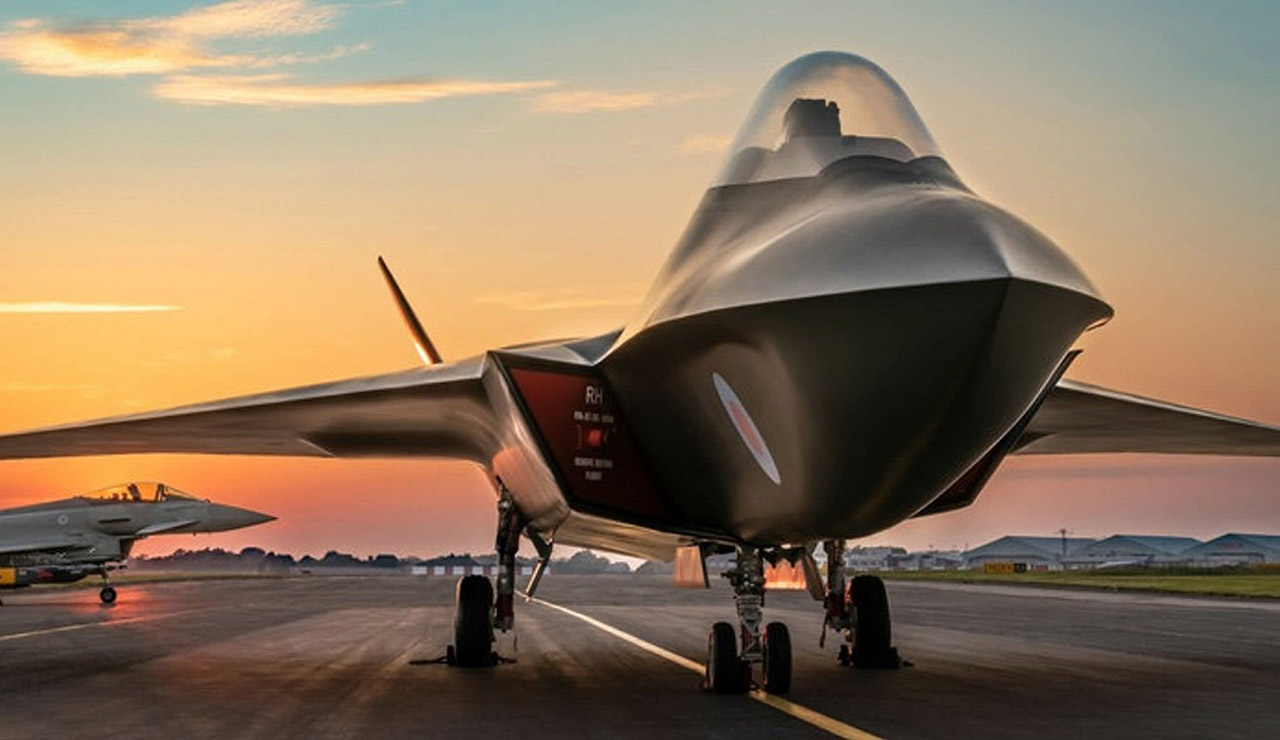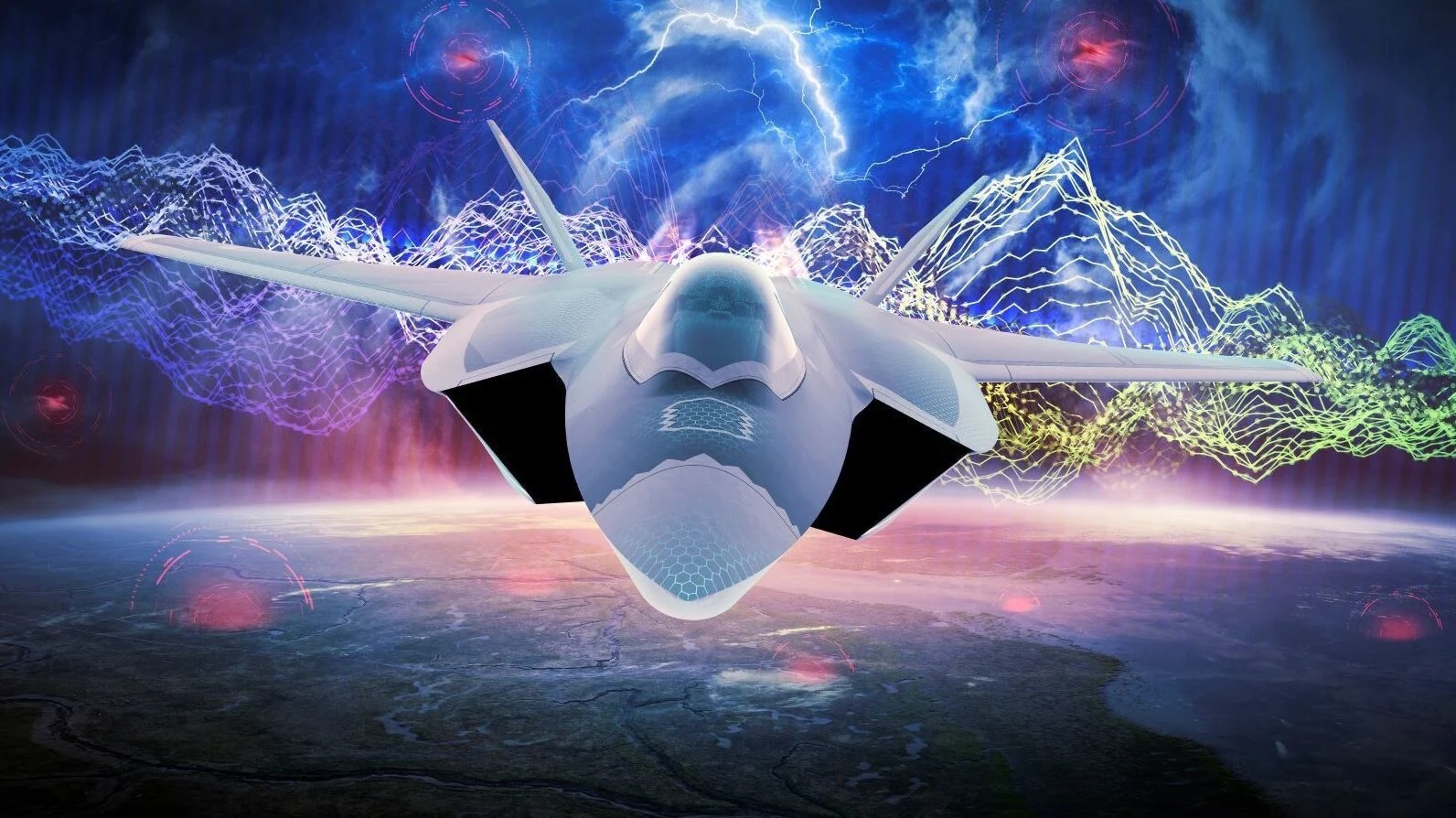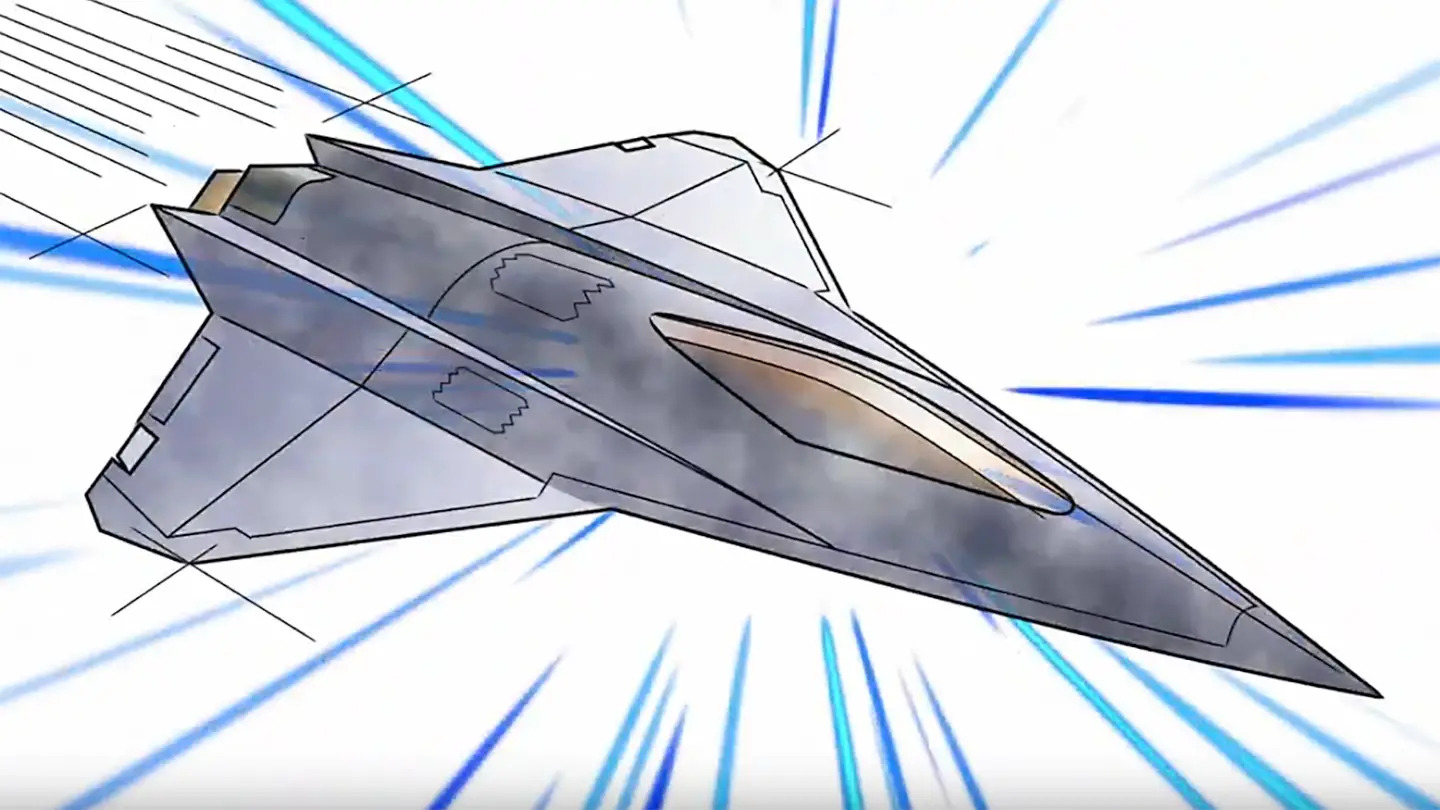Most fighter jets used by air forces worldwide are 4th —and 4.5th-generation aircraft. More than 1,500 fifth-generation fighters are already in service, and many fifth-generation aircraft programs are upgrading to adopt sixth-generation technologies.
Sixth-generation technologies are cutting-edge and still evolving. Therefore, they are expensive. They use fifth and sixth-generation communications, the Internet of Things (IoT), and a system-of-system approach with extensive data sharing between platforms. A close look at the efforts for a sixth-generation fighter aircraft being made internationally.
Many countries require fewer aircraft and cannot afford to fund the programs, so consortiums are being formed. The F-35 program was an example earlier. Some countries want to boost their defense industry and do not want to remain dependent on American programs.
The Global Combat Air Program (GCAP) is one example, where companies from Italy, Japan, and the UK have tied up. As India still struggles with its 5th generation Advanced Medium Combat Aircraft (AMCA), some experts are urging New Delhi to consider joining the GCAP.
After the advent of the jet age, the aviation community started classifying jet fighters by “generations.” There are no official definitions, but the “generation” represents stages in the development of fighter design, performance capabilities, and technological evolution. It is important to understand what the 5th and 6th generation technologies are.
What Is A Fifth Generation Fighter?
The Fifth Generation was ushered by the Lockheed Martin/Boeing F-22 Raptor in late 2005. These fighter jets are designed to operate in a network-centric combat environment. These warplanes feature extremely low, all-aspect, multi-spectral signatures employing advanced materials and shaping techniques.
They have multifunction Active Electronically Scanned Array (AESA) radars with high bandwidth and low probability of intercept (LPI: the term used for a low probability of a radar’s emissions to be usefully detected by an intercept receiver in another aircraft or on the ground). IRST (Infrared Search and Track sensing is used to detect and track objects emitting infrared radiation, such as jet aircraft, helicopters, UAVs, etc.) and other sensors are fused in for Situational Awareness (SA) and to constantly track all targets of interest around the aircraft’s 360-degree bubble.
Very high-speed integrated circuit (VHSIC) technology and high-speed data buses (a bus is a communication system that transfers data between components inside a computer or between computers) are used by avionics suites. Integration of all these elements provides fifth-generation fighters with a “first-look, first-shot, first-kill capability.”
In addition to being highly resistant to ECM (Electronic Countermeasures or electronic warfare), they can function as “mini-AWACS (Airborne Warning and Control System).” Integrated electronic warfare systems, integrated communications, navigation, and identification (CNI), centralized ‘vehicle health monitoring,’ fiber-optic data transmission, and stealth are important features.
Thrust vectoring enhances maneuver performance and helps reduce take-off and landing distances. Super-cruise is inbuilt. The layout and internal structures minimize RCS (Radar Cross Section) over a broad bandwidth of frequencies.
Primary weapons are carried in internal weapon bays to maintain a low signature. Stealth technology has now advanced to the point where it can be employed without sacrificing aerodynamic performance.
Signature-reduction techniques include special shaping approaches, thermoplastic materials, extensive structural use of advanced composites, conformal sensors, heat-resistant coatings, low-observable wire meshes to cover intake and cooling vents, heat ablating tiles on the exhaust troughs and coating internal and external metal areas with radar-absorbent materials and paints.
These aircraft are very expensive. The F-22 costs around $227 million. Due to large-scale production, Lockheed Martin’s F-35 Lightning II fighters will cost around $85 million. Other fifth-generation fighter development projects include Russia’s Sukhoi PAK FA, now SU-57.
India is also developing the AMCA. China’s 5th-generation fighter, the Chengdu J-20, has been flying since January 2011, and combat units started inducting in early 2018. Today, they have nearly 250 aircraft.
China’s Shenyang J-31 first flew in October 2012. The program has received government funding and is being sought after by the PLAAF (People’s Liberation Army Air Force) and the PLANAF (People’s Liberation Army Naval Air Force).
Sixth-Generation Technologies
Advanced digital capabilities include high-capacity networking, Artificial Intelligence, data fusion, cyber warfare, D2D (data-to-decision capability), and battlefield command, control, and communications (C3) capabilities. They also include increased speed and range.
Advanced stealth airframes and avionics: Sixth-generation technologies mean more modular design where primary aircraft components can be swapped within hours for mission requirements and ease the introduction of future upgrades. Software Architecture with separation of flight critical operations is another function.
There is also the use of advanced GaN transistors (Gallium nitride – GaN — is a very hard, mechanically stable semiconductor. With higher breakdown strength, faster switching speed, higher thermal conductivity, and lower on-resistance, power devices based on GaN significantly outperform silicon-based devices) in AESA (active electronically scanned array) radar.
Increased battlefield survivability in the highly contested, anti-access/area denial (A2/AD) environment and enhanced ground support/attack adapted to the future threat environment.
An initial focus on air superiority roles has moved away from close-in dogfighting, which is becoming less common, and instead broadened to embrace ground support, cyber warfare, and even space warfare capabilities, with very long-range air-to-air missiles (VLRAAM) capability.
The flexibility to undertake manned and unmanned missions is also sought, along with the ability to integrate with numerous fleets of satellite drones and ground sensors in a high-traffic networked environment to deliver full “data-to-decision” (D2D) capability.
6th-generation fighters will mostly have single-seat cockpits. Basic flying and procedures training will be mostly done on simulators. Some will be optionally manned and will perform AI-supported missions.
Manned fighters will control “Loyal Wingman” or a swarm of drones for both offensive and defensive tasks. The aircraft will be able to act as an airborne network node. It will be capable of receiving and relaying data to multiple platforms, such as other aircraft, ground vehicles, or satellites. It will also process data onboard and dynamically generate new target lists or update mission parameters on the fly.
Increased-range sensors and standoff weapons can also take on aerial and surface targets. Greater electrical power generation is also added to enable directed energy weapons (DEW) such as laser close-in weapon systems (CIWS).
Virtual cockpits and helmet-mounted displays allow the pilot 360-degree vision and eliminate many cockpit displays. Adaptive Versatile Engine Technology comprises the sixth-generation strike capability with a system of systems including communications, space capabilities, standoff, and stand-in options.
The Tempest Program
In July 2018, during the Farnborough Airshow, the UK showcased a mock-up of the ‘Tempest,’ a BAE Systems-led sixth-generation fighter. It was part of the wider Future Combat Air System (FCAS).

A year later, in July 2019, Sweden signed a Memorandum of Understanding (MoU) with the UK to develop the FCAS. In September 2019, Italy formally joined the Tempest program. In December 2021, The UK, Italy, and Sweden signed a trilateral MoU for cooperation on the FCAS.
The Tempest explores many new technologies, such as directed energy weapons (DEW), an augmented reality cockpit with little-to-no physical controls, and a heads-up display via the pilot’s helmet.
This would reduce aircraft weight, improve upgradability through a software-based approach, and provide additional display space for information outside of the typical flat-screen arrangement.
There is also biometric and psycho-analytical monitoring, which explores pilot health monitoring during combat and training to identify issues such as stress, confusion, cognitive load, and hypoxia or G-LOC (G-induced loss of consciousness occurs when acceleration forces produce a situation in which the cardiovascular system is unable to supply oxygenated blood to the regions of the nervous system that support consciousness).
Tempest was to work with uncrewed aerial vehicles (UAVs). Artificial intelligence (AI) supported Intelligent Virtual Assistant (IVA) was planned.
Japan’s Mitsubishi F-X
Following the USA’s decision not to allow the export of the F-22 Raptor, Japan began looking for a domestic evolution of a new fighter aircraft. The Mitsubishi X-2 Shinshin experimental aircraft took flight in April 2016.
The research and data collected from the X-2 program developed Japan’s main fighter effort, the Mitsubishi F-X program. In mid-September 2019, flight tests were conducted on integrated sensors for the F-X.
The sensors were tested on board a F-2 fighter and the results were reported to be good. Japan prioritized a few key aspects of the program’s development: capability for future air superiority, potential to expand capability by incorporating next-generation technologies, and affordable cost.
Meanwhile, Japan and the UK planned to merge their programs. In February 2022, the UK and Japan reached a further agreement to jointly develop sensor capabilities for their respective fighters, known as the ‘Japan and Great Britain Universal Advanced RF system’ or JAGUAR.
Global Combat Air Program (GCAP)
The GCAP is a multinational initiative led by the United Kingdom, Japan, and Italy to jointly develop a sixth-generation stealth fighter. The respective governments announced it on December 9, 2022. This was cemented with a treaty signed in December 2023 in Japan.
The program proposes to merge their previously separate sixth-generation projects: the BAE Systems Tempest (UK and Italy) and Mitsubishi F-X programs. The collaborative governmental headquarters and industrial hub for the effort would be based in the UK, with Japan providing the first CEO and Italy the first leader of the business entity.

The formal development phase will begin in 2025. The prototype flight demonstrator is expected around 2027, and aircraft service induction around 2035.
The program aims to replace the Eurofighter Typhoon, in service with the Royal Air Force (RAF) and the Italian Air Force, and the Mitsubishi F-2, in service with the Japan Air Self-Defense Force (JASDF). The aircraft would also be available for export, further reducing the per-unit costs.
The program is envisaged as an equal partnership between the member nations. In the UK, BAE Systems will be the prime contractor and handle the airframe, Rolls-Royce – the engines, Leonardo’s UK division – the electronics, and MBDA UK – the weapons.
In Japan, Mitsubishi Heavy Industries will be the prime contractor, with IHI Corporation handling the engines and Mitsubishi Electric the electronics.
In Italy, Leonardo S.p.A., as the prime contractor, will have Avio Aero working on the engines while MBDA IT will work on missile development. In 2024, detailed development and cost-sharing for each company will be clarified, and production will begin around 2030, with the first aircraft to be deployed in 2035. They were looking at possible Swedish, Saudi Arabian, and German membership.
In December 2022, two weeks after GCAP was announced, Japan and Sweden signed an ‘Agreement on the Transfer of Defense Equipment and Technology’ that aims at deeper bilateral ties between both nations.
There was speculation that Sweden would replace the Saab JAS 39 Gripen after acquiring membership of GCAP. However, by March 2023, it became clear that Sweden’s concept for future fighters did not align with the views of the UK or Italy. In December 2023, Swedish officials announced that Sweden would not decide on a future fighter to replace the Gripen until 2031.
Japan strongly opposed Saudi participation due to the security of sensitive technologies and the Saudis’ desire for a greater contribution from their industry. Japan, however, is working on amending its stringent defense export rules to consider promoting the transfer of finished products to third countries to lower procurement prices.
In mid-March 2024, Leonardo’s CEO Roberto Cingolani criticized the UK for lack of transparency regarding the details for the procurement of the wider system-of-systems for GCAP and that there was still uncertainty regarding the manufacturing and development responsibilities of the various partner companies.
Sixth-Gen Elements Of GCAP
Notwithstanding the partnership complexities, there is a need to examine the sixth-generation capabilities sought by the tri-nation GCAP.
Reaching a consensus on the initial capability requirements that must cater to the combat environment beyond 2040 and adopting a design philosophy that facilitates capability expansion over the system’s lifespan has its challenges.
Given the massive investments, the program must deliver the “combat bang for the buck.” The aircraft must have capabilities that will not only act as deterrents but also defeat threats.
The US’s Next Generation Air Dominance (NGAD) has flagged a portfolio of technologies to ensure continued air superiority. Similarly, France, Germany, and Spain are pursuing the Système de Combat Aérien du Futur (SCAF / FCAS) program to replace the French Rafale jets and the Eurofighter Typhoons from Germany and Spain.
Next-generation effectors (weapons), command, control, and information systems, and through-life services (sustainment, upgrade, and training) are being mentioned. The GCAP must deliver an unrefueled combat radius greater than the F-35 of around 1250 kilometers.
The next requirements would be the high capability for AI-powered sensor integration, data fusion, and secure communications. This, along with directed energy weapons, will require high onboard power generation. The aircraft must fit into the NATO-adopted Agile Combat Employment (ACE) concept and have minimum deployable capability.
The aircraft would have to meet the compatibility requirements of each partner country. They will also have NATO compatibility. No major new program relies entirely on autonomous or even remotely controlled systems, but AI and machine learning will significantly support the pilot. The aircraft capability priorities will have to be optimized, especially in a multi-domain operations environment. All data flow and activities would have to meet the Observe, Orient, Decide, and Act loop framework.
Standard aircraft maneuverability, speed, range, and weapon carriage will see enhancements. The ability to perform combinations of air-to-air and air-to-surface roles will be required. Low observability and the electronic warfare suite will have to cater to the contested environment of the 2040s and beyond. The supply chain dynamics for aircraft maintainability and spares would have to be kept in mind, while sustainment has to factor in maintainability costs.
GCAP must easily and regularly upgrade to thwart the growing capabilities of Chinese and Russian platforms and Area Denial (AD) systems. For this, adaptable onboard systems, open architecture, and electric power would be required.
Sensor fusion and optional manning would mean heavy reliance on data links and networks. These could be disrupted by jamming. Thus, sixth-generation avionics would have to be resilient and capable of withstand adversary jamming. Above all, developmental and project costs would have to be kept under control.
The US NGAD Program
The Next Generation Air Dominance (NGAD) of the United States Air Force (USAF) is a sixth-generation air superiority initiative aiming to field a “family of systems” that is to succeed the Lockheed Martin F-22 Raptor.

Crewed fighter aircraft are the centerpiece program of the NGAD and have been referred to as the Penetrating Counter-Air (PCA) platform. They are to be supported by uncrewed collaborative combat aircraft (CCA) or loyal wingman platforms through manned-unmanned teaming (MUM-T).
The NGAD originates from DARPA’s Air Dominance Initiative study in 2014 and is expected to field the new fighter aircraft in the 2030s. While originally pitched as a joint Air Force-Navy program, the two services eventually decided to have separate programs. The Navy’s F/A-XX is a crewed fighter component and would have a similar fielding timeframe.
Chinese and Russian Programs
After successfully developing its fifth-generation fighter J-20, China is now working on the development of a next-generation aircraft. China had begun pre-research on sixth-generation aircraft in 2019 at Chengdu and predicted that the program would come to fruition by 2035.
In February 2023, the Aviation Industry Corporation of China (AVIC) shared its six-generation fighter aircraft concept on social media. The featured concept included diamond-shaped wings and a tailless design, which correlated to earlier images released through various AVIC presentations.
Some have referred to the Chinese sixth-generation aircraft (J-XX) as Huolong (Fire Dragon). But, as of date, China is still trying to improve base radar, avionics, and engine technologies.
Despite the Su-57 ‘Felon’ still not fully operationalized, the Russians have begun evolving 6th-generation fighters that neural networks may man. It will be manned but will have more automation for routine flight and combat functions. The Russian government has pushed home-grown Artificial Intelligence (AI) and quantum technologies over the last two years.
It’s Action Time, India
India is still evolving technologies for its fifth-generation aircraft, the Advanced Medium Combat Aircraft (AMCA). India is also still a ‘work-in-progress’ in technologies related to aero-engines, AESA radars, EW systems, modern weapons, actionable Artificial Intelligence (AI), and other advanced avionics. Some sixth-generation technologies are being developed and will be imbibed in the AMCA, which itself is a decade away.
China already has over 200 J-20 fifth-generation fighters. They are working on 400 by 2027 and 1,000 by 2035. India’s AMCA may join service only around 2035. Pakistan is seeking J-31 from China by 2029.
India cannot be left behind. While India takes its call on the fifth-generation aircraft, it also has to start work on sixth-generation technologies.
At current technology levels, going alone will not be a practical option for India. India must hasten the LCA Mk2 and AMCA and get its MUM-T “Loyal Wingman” technology right.
Many countries have collaborative routes. Should India join the GCAP or the French-led FCAS program? These are hard calls to make. Collaboration means sharing costs and risks.
India has already burned its fingers with Russia on the 5th-gen fighter program. India could use the higher number of military systems required as leverage. It is time to “take calls but hasten slowly.”
- Air Marshal Anil Chopra (Retired) is an Indian Air Force veteran fighter test pilot and is the former Director-General of the Center for Air Power Studies in New Delhi. He has been decorated with gallantry and distinguished service medals while serving in the IAF for 40 years.
- He tweets @Chopsyturvey
- Follow EurAsian Times on Google News




